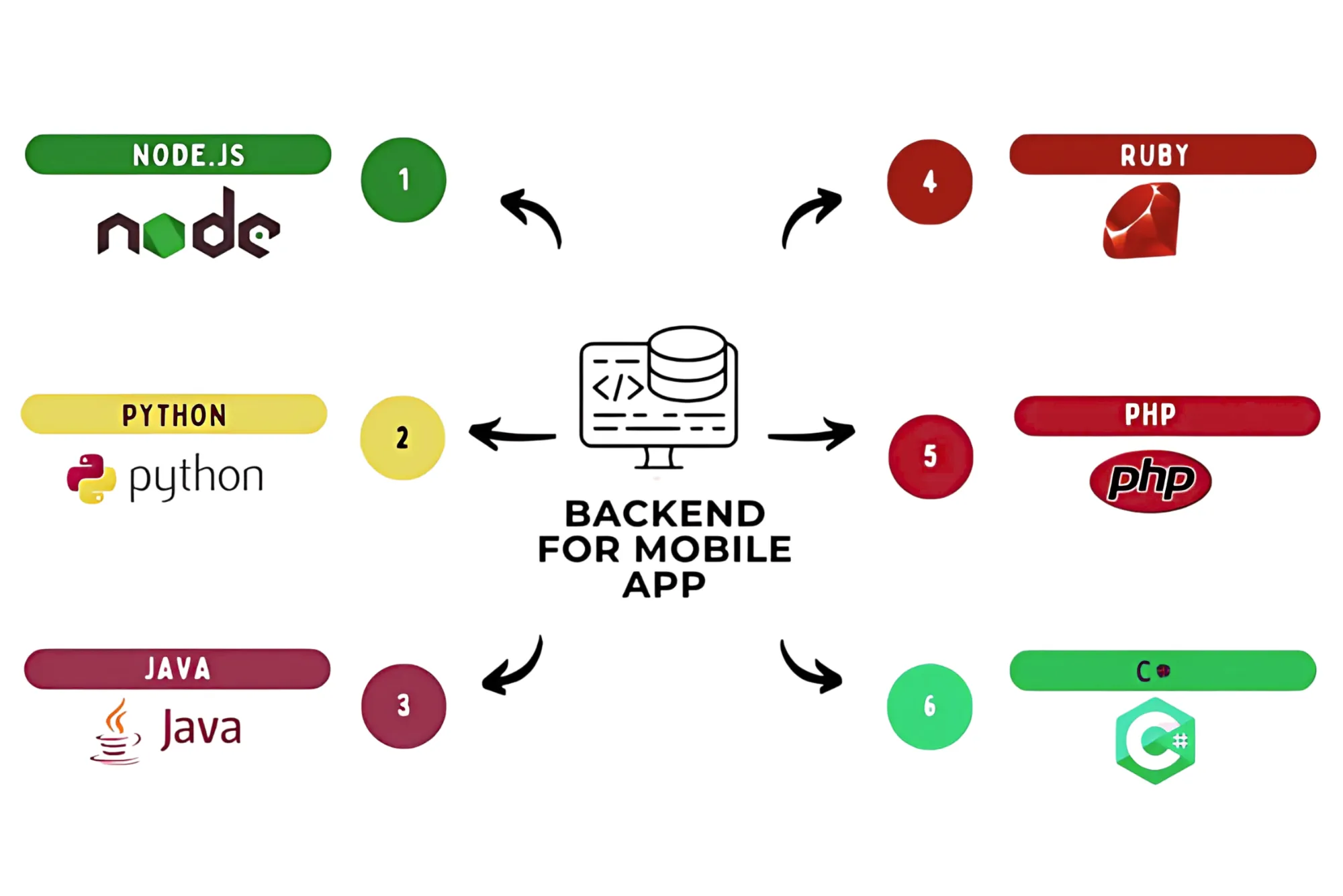As someone who has worked closely with both startups and seasoned developers in the mobile ecosystem, I often get asked: “What is the best backend for mobile apps?” It’s a simple question on the surface, but the answer can be quite nuanced depending on the app’s purpose, user base, budget, and long-term growth plans. Whether you’re building a simple to-do list app or the next big mobile game, your backend choice will play a critical role in your app’s performance, scalability, and development lifecycle.
In this blog post, I’ll walk you through what backend development really means for mobile apps, the most popular backend options out there, and how to choose the right one depending on your needs. I’ll also share insights from the perspective of working with both an app development company and a game development company, because the right backend often depends heavily on the nature of your app.
Understanding the Role of a Backend in Mobile Apps
Let’s start with the basics. In mobile app development, the backend is essentially the server-side part of your application. It’s where the heavy lifting happens — user authentication, database management, real-time updates, data processing, push notifications, analytics, and more. While the frontend (the part users see) is built with mobile platforms like iOS or Android, the backend could be based on Node.js, Python (Django or Flask), Ruby on Rails, Java, or cloud services like Firebase or AWS Amplify.
Choosing the right backend is crucial not just for performance, but also for ease of development, maintenance, security, and future scalability.
Key Considerations When Choosing a Backend
When I advise clients or work with development teams, I always stress that choosing a backend is not about going with the trendiest tech stack — it’s about alignment. Here’s what you should consider:
-
Type of Application: A social networking app with real-time features will need a different backend than a static business app. Similarly, mobile games often require low-latency data syncing, matchmaking, or leaderboards — all of which impact the backend choice.
-
Scalability Needs: Are you expecting rapid user growth? Your backend should scale seamlessly.
-
Developer Expertise: Sometimes the best backend is the one your team knows well. Speed of development and ease of debugging matter.
-
Third-Party Integrations: Will you need to integrate with payment gateways, CRMs, or analytics platforms?
-
Budget and Timeline: Custom backend development can be costly and time-consuming. Some solutions let you go to market faster.
Popular Backend Options for Mobile Apps
Let’s dive into some of the most commonly used backend solutions, with real-world context for how and when to use them.
1. Firebase (by Google)
Firebase has become a go-to backend-as-a-service (BaaS) platform for startups and solo developers. It offers real-time database syncing, authentication, cloud functions, push notifications, and even hosting — all tightly integrated with Android.
I’ve seen an app development company use Firebase to power a location-based delivery app and scale it to over 50,000 active users without any major performance issues. The real-time database is especially useful for apps that require instant updates, like messaging or tracking features.
That said, Firebase has limitations when it comes to complex querying and large-scale data relationships. For enterprise-grade applications, developers often pair it with other services or transition to more flexible backend solutions.
2. Node.js with Express
Node.js is a powerful runtime built on Chrome’s V8 JavaScript engine. When paired with Express.js, it becomes a fast, lightweight, and flexible solution that many modern developers prefer.
This setup is excellent for building custom APIs and handling asynchronous data — perfect for chat apps, e-commerce platforms, and even multiplayer game backends. In fact, one game development company I collaborated with used Node.js to handle real-time multiplayer logic and socket connections for a mobile battle royale game. It worked beautifully for handling thousands of concurrent users with minimal lag.
What’s great about Node.js is the massive ecosystem of packages available through npm, allowing developers to add functionality quickly and efficiently.
3. Django (Python)
Django is a high-level Python framework that promotes rapid development and clean, pragmatic design. It’s great for developers who prefer batteries-included frameworks — meaning it comes with authentication, admin panels, ORM, and more out of the box.
I’ve worked on mobile apps that needed complex data models and strong security compliance, such as health and education apps. Django made it easy to manage databases, create RESTful APIs, and ensure data integrity. Plus, if you’re using machine learning models, Django pairs well with Python’s data science ecosystem.
4. Ruby on Rails
Ruby on Rails is still a strong contender for backend development, especially for startups looking to go to market quickly. It’s opinionated, which means it enforces good practices and helps reduce decision fatigue.
For content-heavy apps or platforms where time-to-launch is a priority, Rails shines. I’ve seen app development companies deliver MVPs within weeks using Rails, thanks to its mature libraries and developer-friendly environment.
5. Amazon Web Services (AWS) / AWS Amplify
AWS offers a suite of cloud computing services that can power anything from simple apps to enterprise-level applications. AWS Amplify simplifies the process for mobile apps, offering pre-built components for authentication, storage, GraphQL APIs, and more.
For apps expecting rapid growth or those requiring enterprise-level reliability and compliance, AWS is an ideal choice. But be warned — the learning curve can be steep, and cost management requires attention. Many companies choose to work with a game development company experienced in cloud architecture to avoid pitfalls.
6. Backendless & Other Low-Code Platforms
If you’re looking for speed and don’t have a huge budget for backend development, platforms like Backendless, Appwrite, or even Google’s App Engine can give you a head start. These tools are perfect for solo developers or small teams.
While they might not offer the same level of customization as traditional backend frameworks, they can handle basic backend needs like user management, file storage, and database integration well.
Real-World Use Cases: How Companies Choose
Let’s explore a few hypothetical but common scenarios based on my work with various clients:
1. A Fitness App Startup:
They needed quick go-to-market, social features, and scalability. Firebase + Node.js gave them real-time sync for workout tracking and the flexibility to build a referral program with cloud functions.
2. A Mobile Game with Real-Time Multiplayer:
A game development company built the backend using Node.js and Redis for real-time data handling, while leveraging AWS Lambda for game event processing. The architecture was lean and cost-efficient.
3. A Corporate HR App:
Security and role-based access were critical. Django with PostgreSQL and an on-premise deployment ensured compliance with corporate policies and sensitive employee data.
Each app had different priorities — and that’s the point. There’s no one-size-fits-all “best backend.” The best backend is the one that fits your current goals while offering room to grow.
What to Ask Your Development Partner
If you’re working with an app development company or hiring freelance developers, make sure to ask the right questions:
-
Why are you recommending this backend?
-
How will this scale as we grow?
-
Can we easily switch or expand later?
-
What security protocols will be in place?
-
Are there any vendor lock-ins we should know about?
Experienced developers should be able to justify their tech choices based on your app’s specific needs, not just personal preference or trends.
Conclusion: Make Informed Choices, Not Trend-Based Ones
Choosing the best backend for your mobile app isn’t about jumping on the latest trend — it’s about understanding your app’s unique requirements, future growth plans, and the expertise available to you.
From Firebase’s simplicity to AWS’s enterprise power, from Node.js’s real-time magic to Django’s security-first approach, each backend offers something different. Whether you’re working with an app development company to launch your first product or a game development company to power an immersive multiplayer experience, aligning your backend to your goals will pay dividends down the road.
If you’re still unsure, start small with a scalable backend, and refactor as your needs evolve. That’s the beauty of modern app development — flexibility, iteration, and endless opportunity.
Have questions or need help choosing a backend for your mobile app? Drop them in the comments — I’d be happy to help based on your specific use case.





